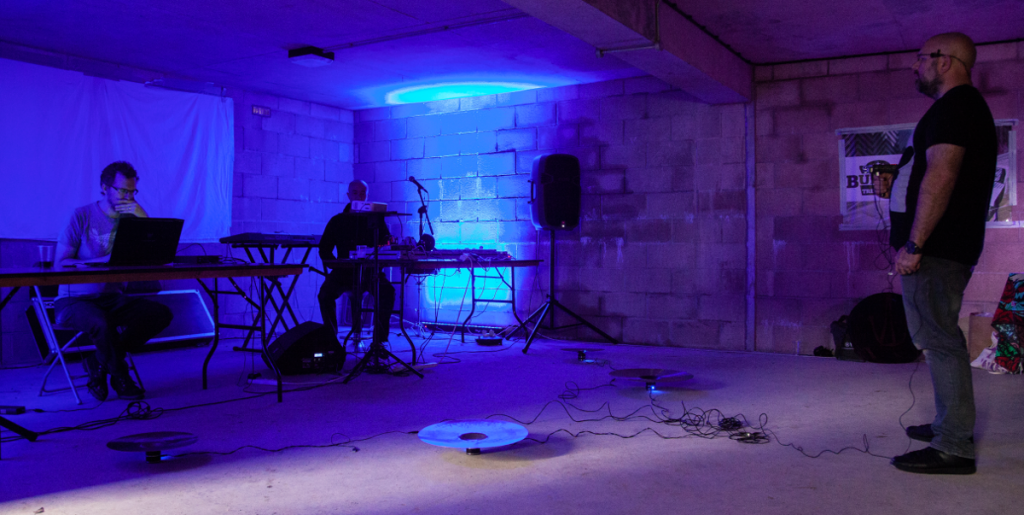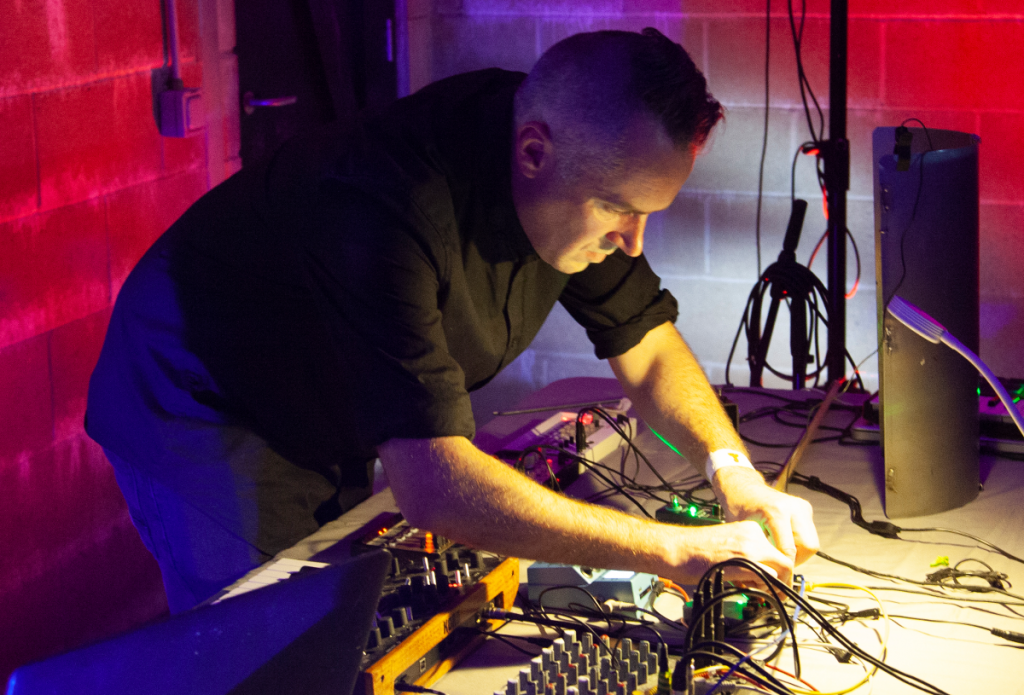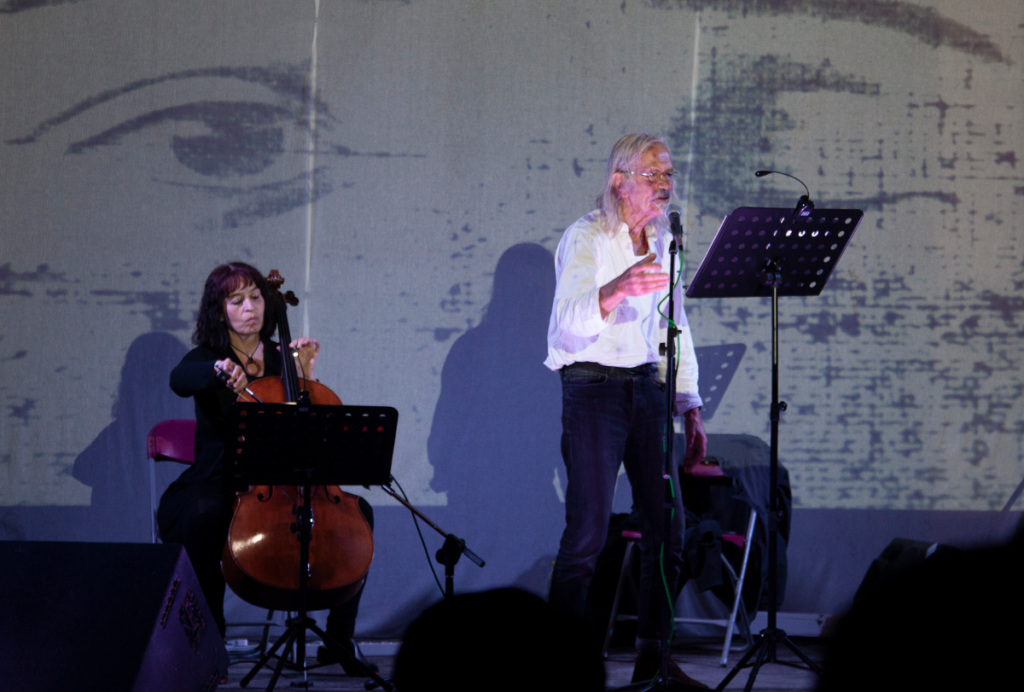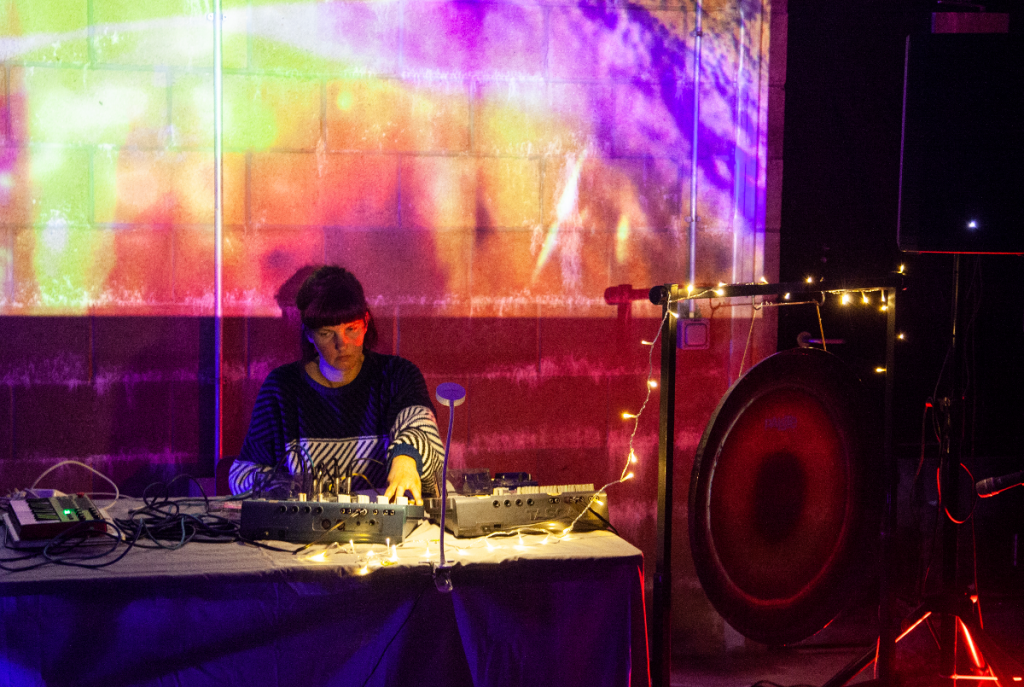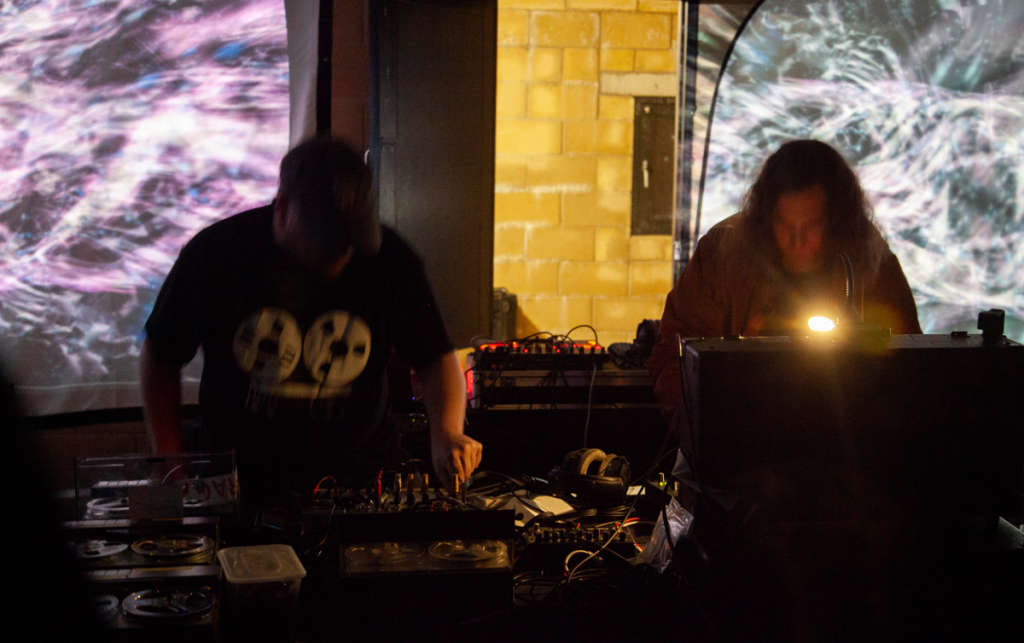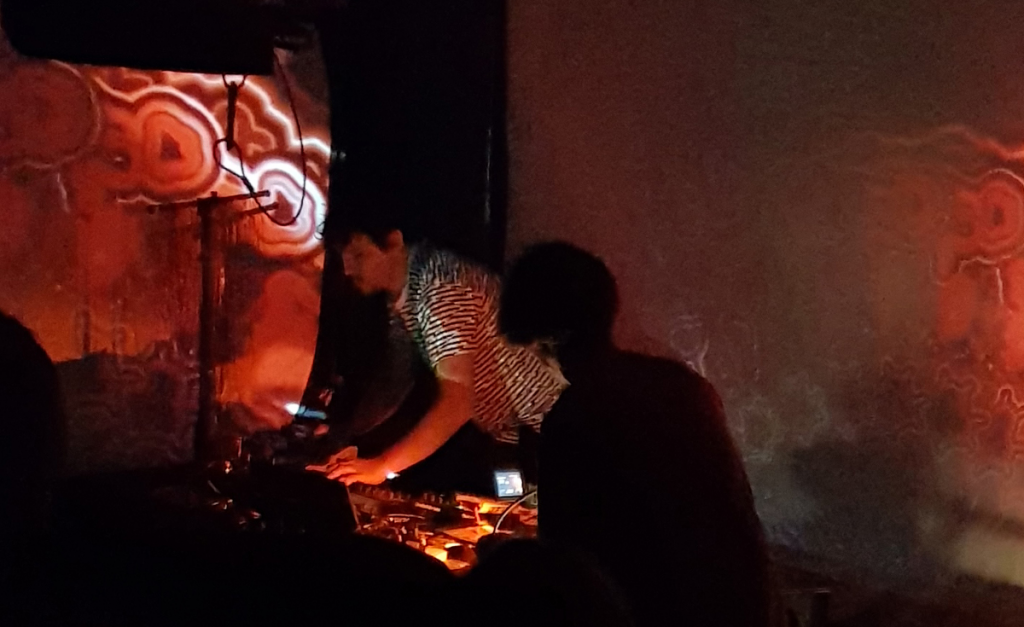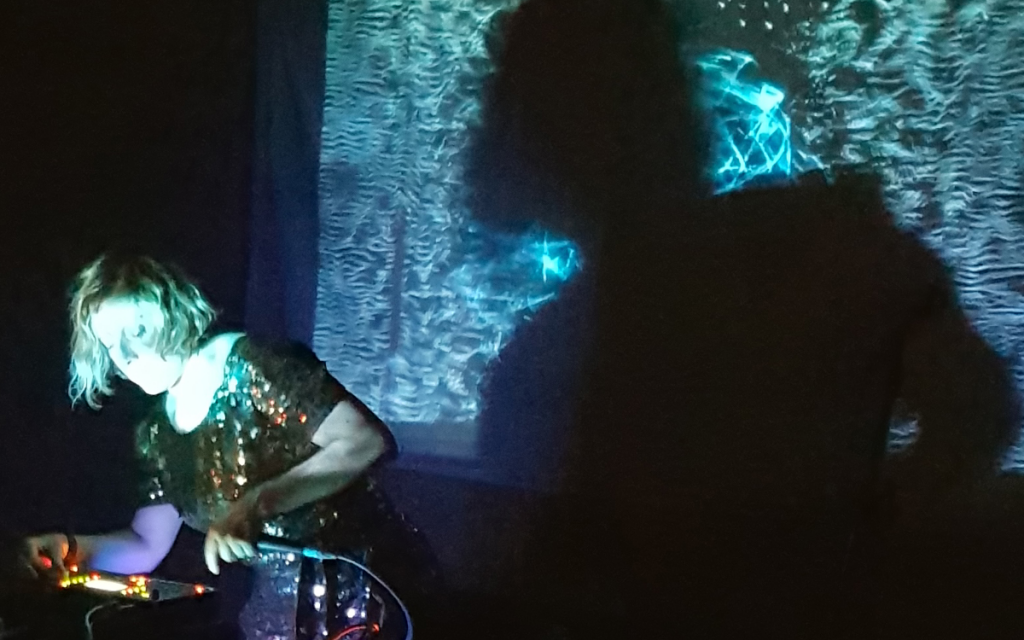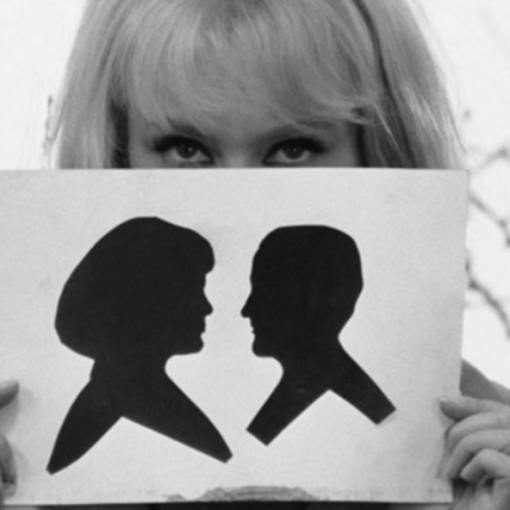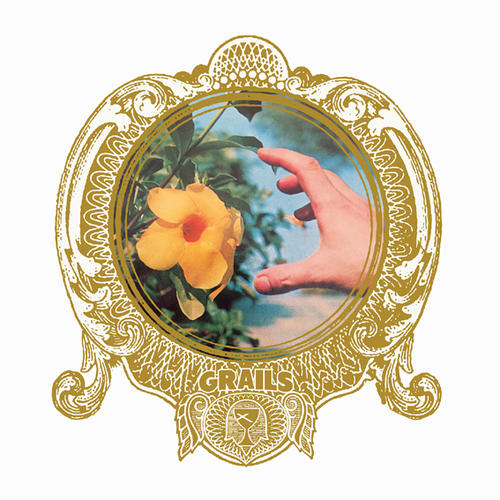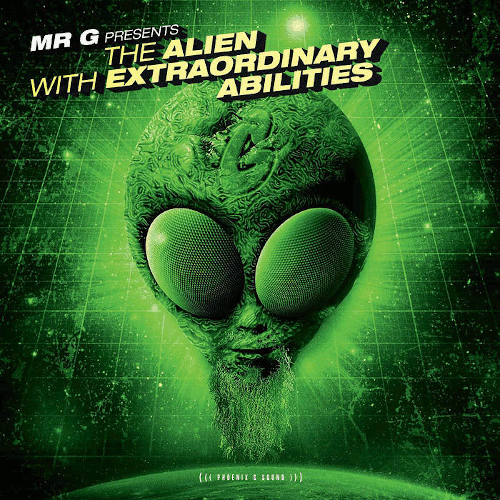Salisbury Plain
17 August 2019
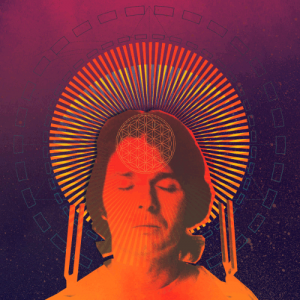 The British Army first started to clear the settlements from Salisbury Plain after the First World War, but it was during the preparation for the D-Day landings in 1943 that they chose to evacuate all the residents from the little village of Imber, in the north-west section of the plain, and it was never re-inhabited. This area is opened up for a few days of the year to enable relatives to access the churchyard and this year, one of these days coincides with The Delaware Road.
The British Army first started to clear the settlements from Salisbury Plain after the First World War, but it was during the preparation for the D-Day landings in 1943 that they chose to evacuate all the residents from the little village of Imber, in the north-west section of the plain, and it was never re-inhabited. This area is opened up for a few days of the year to enable relatives to access the churchyard and this year, one of these days coincides with The Delaware Road.
Over the years, the army has sequestered more land for peacetime training purposes and not far from Imber, in a wilder part of the Plain, there is a razor-wired compound full of empty block-built shells of buildings for the army to practise forced entry and sniper activity. Somehow, the organisers of the event have arranged to utilise this space for a day-long festival dedicated to the further reaches of the experimental music scene, as well as inviting record labels, book publishers and artists to show their wares. It is a bizarre setting for a group of people given to gentler, more artistic leanings to be, but somehow its austere and maze-like layout lent the right vibe to the industrial antics and noise terrorism that some artists brought and even the more pastorally minded performers gave the place a different perspective for one day.
It was slightly disconcerting to be making your way on arrival through security gates topped with razor wire to the car park, but the familiar sight of certain faces of renown convinced us we were in the right place, and immediately we were having to make a choice as to which direction we should head first. The familiar strains of Alison Cotton were travelling on the wind from the largest venue of the day, an enormous arched Nissen hut-type affair with a corrugated roof was where she was holding a good group of people in thrall; while in one of the smaller bunkers, Bristol-based percussionist Seth Cooke was preparing one of his cymbal experiments. We opted for the latter, just to ease us in, and entered to find the basic concrete floor holding four cymbals, each nestled on some kind of device that was translating the feedback coming from a digital microphone held by Seth and facing in towards the tables of laptops. The vibrations from the microphone were causing the cymbals to resonate, and these tremors were being manipulated and drawn into ever-increasing waves of tonal feedback. The tone became gradually more pervasive and at times filled the frequency range, making thought and concentration difficult. The sounds ebbed and flowed, but the feeling was of being on a radioactive beach somewhere — or in a war zone where a device has just gone off and your hearing has been affected, your mind cleansed somehow, all other thoughts pushed out.I left Mic there to luxuriate in the rinsing sensation to catch the last part of Alison’s performance. She was playing a similar set to when we had seen her recently in Send, and the minimalism of her set up, just voice, violin, drones and bells, was magical in an ancient, timeless way. Her voice could be current at any time in the last 500 years, and the enormous reverb created a place of worship for the audience from most inauspicious surroundings as it reverberated and resonated through the bunker, merging with the sound of a torrent of rain on the roof, creating a very English, very primal experience. Her violin playing drew a melancholy sigh from me, evoking a time when all around the plain would have been small areas of coppiced woodland with farmers driving their beasts to market. Her simple, dark outfit brought to mind a Celtic goddess, and as the final notes rung out and the chimes slowly dwindled, she did a good job of transporting the audience.
I decided to adventure a little further and found three more huts, one of which contained the lovely Justin Watson from Front And Follow, who was curating one room, and another hut that contained Frances Castle from Clay Pipe selling her wares, including LPs and some lovely images from the album covers. The third hut contained another stage upon which Polypores was ensconced, the room packed to a point that it was difficult to be in there with the door shut. I caught five minutes of his Moogy drone-like womb music that gently lulled and soothed before making room for more people. The first set to be played on Front And Follow’s stage was from ARC Soundtracks. A random selection of bird song, train noises and wild animals gargling preceded his set, but when he took to the stage with what looked like a miniature breastplate in the centre of the table, we were intrigued. We were warned it would be loud, but on taking a bow to the mic’d up breastplate, waves of deep, sinister sounds emanated like messages for abandoned ghosts. It was starting out calm but after a few minutes, it felt like being in a wind tunnel on tickover, shrinking you down to a fraction of your real size as the noise engulfed. Dirty, distorted beats became something else, something more tribal, like the beating of blood with the metallic clang of a blacksmith forging Jesus‘s nails in preparation for the long walk.It was heavy, drawn out and at points sepulchral, with spoken word elements and a cold war austerity mixed with concrete block minimalism. That minimalism was cold, but not joyless and revelled in the stark brutality. There was a gradual build, a slow ascent as textures were added to the sense of a long uphill journey. The spaces inevitably disappeared as more sound was fed into the pot and a gravelly bed of distortion started to unsettle the foundations. Voices joined the cacophony, blistered and fragmented, swirled inwards and downwards. The subverted military might was corroded and offset by pot-shots and broken pistons. We left reeling into the daylight and headed for yet another undiscovered bunker.
The set from Sarah Angliss was a whole other experience, with her whimsical songs taking in a much more pastoral vibe. I arrived as she was playing the clavicymbalum, an ancient but tiny piano-like instrument with strings that sounds a little like a harpsichord. The clavicymbalum allied to a carillon of bells that Sarah had rigged up gave the whole thing a baroque air, but the clavi was wildly out of tune and we were in a concrete-floored hut where everything was grey. Somehow, that didn’t matter, and Sarah’s infectious enthusiasm had the audience entirely on her side as she regaled us with a tale of the genesis of the song “Dust” and its relationship to the moon landing.Things were both ancient and modern here, with the clavicymbalum rubbing shoulders with a theremin, while on the table were various electronic devices, producing voices to accompany the vignettes, one of which Mic insisted was Jhonn Balance. Her skill with the theremin was sublime to watch and hear, with bird song fluttering out on the the aether, her hands drawing parallels with their wing patterns as she slowed the sound down to a crawl, time almost stilled just for a moment. Then a wild keyboard attacked with voices roiling and churning, like souls trapped under a veneer of garbled drones. It was quite a volte face, but one that she managed with great charm again and again, from the purity and unbearable sweetness of the theremin to the yearning drone of a giant recorder. She flitted from instrument to instrument, each one the perfect accompaniment for that moment.
It was still light when we left and ran into Farmer Glitch, selling all manner of recordings from the last twenty years. We realised that we had missed IX Tab, but hung around the R.E.E.L hut awaiting Matt Saunders‘ latest project, Assembled Minds, consisting of lazy, gauzy beat-driven synth stuff with an astral 1990s feel, harking back to Magnetophone, but with oriental sci-fi abstractions. It was mellow, and the synths against the backdrop of airplane noise and dirty, slinky beats was intriguing, with the added curveball of scurfy effects and organ-dislodging bass. It was the most dancefloor-friendly thing we had heard so far, and the alien artwork and decrepitude of the building lent proceedings an illicit ravey air. At times, it became spacey and Tangerine Dreamy with a filmic quality, all tension and impending drama. He is in touch with his techno roots all right, but there was a quality in the keening synth notes that evoked mystery and something more cerebral. Over on the main stage, Penny Rimbaud was declaiming in poetic tongue all that is wrong with our broken consumerist society. Accompanied by a fantastic cello player, he stood like a crooked white-haired crow, hell-bent on making us see what needs to be seen without filter or excuse. The cello followed his every phrase, sometimes accompanying the rhythm of his delivery and at others creating counterpoint or little sparks of sound that highlighted a feeling, or just added some dramatic texture. His shrieking of “Mammon!” as he dismantled popular culture before our very eyes was both unsettling and thought-provoking. We couldn’t help but admire those principles that find him still standing up for what is right as eloquently and angrily as thirty-five years ago in Crass.We were late for the second set on Front And Follows’ stage, but Embla Quickbeam‘s one-woman set up with psychedelic visual backdrop seemed to soundtrack the inner workings of mystery organisms. The secretive whispers of her pulsing machines echoed the microscopic chatter and clatter of unseen dynamics, the audience enveloped in surfing waves of plasma through unseen corridors. It would have been great to see more, but we found ourselves ushered out, this time into darkness.
A two-storey structure we hadn’t discovered up to this point was the home for Howlround and the most outstanding part of their equipment was a linked series of four reel-to-reel recorders, a slight delay being brought as one of the duo of Robin The Fog and guest Steve McInerney from Psyché Tropes fought with a machine trying to feed on the tape.The slow, dirty rasp of wheels gradually finding traction gave the impression that these guys were in for the long haul as phantasmal noises appeared amid the howl of space detritus. Robin and Steve were bobbing with anticipation at what was to come, along with some fist thrusts for good measure as the audience was caught up in the growing drama. A disgustingly chewy, churning beat set the room moving, with a four-screen backdrop of ectoplasmic delight giving an old school UFO vibe. It wasn’t really dance music, but something about the insidious creep of volume and intensity that didn’t lead anywhere meant that it shares the same mood.
It was like a juggernaut aiming to take over your faculties as you were bombarded with overwhelming sensations; chattering lips and whipping swathes, distant clashes, a slow inexorable inevitability. We were hearing the construction of a soundscape piece by piece, pulsing with mysteries, spanning the lifetime of an organism, crackling and sizzling with strange life. At times, it felt like some bizarre ultrasound, and as the backdrop took on a bodily warmth, the young woman beside me likened it to being in the womb while your mother ran up and down the stairs, the sensations coursing through her body and vibrating through yours. I thought she should have the last word.In amongst the single artists, duos and trios were other unmanned stations. One van sat with a mannequin head inside, sitting atop piles of tiny television screens, different facial expressions projected onto him as a spider’s web of intricate projections seemed to prevent access. Another room had two levels of projections. Distorted images of dramatic news footage played slowly on the wall as mathematical symbols, star charts and occult images were projected onto a clear screen in front, meaning that you had to watch both simultaneously as a soundtrack of apocalyptic earth tremors and cicada song filled the air.
Outside in another place, our first stringed instruments of the day appeared not long after at the hands of Brazen Head. An electric bass and what looked like a customised sitar were being wrangled as a vocalist lunged and moaned over a nest of electronics. The bassist seemed to be maintaining a rhythm as the sitarist unleashed coils of discordant noise over the top like metal tendrils. They sparked and flared, cracked shards glittering in the cold light of the repetitive vocals.As we made our way out, it was impossible to miss the stampeding behemoth that was Cattle in the main shed (pardon the pun). Two drummers were beating out an unholy racket; one of them bald and bearded, resplendent in a full-back tattoo concentrated on punishing rhythm as the other was all cymbals and toms. The other members were a guy on noisebox who was unleashing dirty metallic soundscapes, while a fantastic bassist played like it was one massive guitar with four strings, fingers all over the fretboard, coaxing feedback and waves of grinding groove. Behind all this was the most apoplectic vocalist I have seen in a long time, putting his voice through a series of pedals and attempting to raise Satan with his vein-popping fury. The screeching backdrop went straight for your ears as the rhythm section attempted to raise the dead.
Mr beetroot head in the corner with his disconcerting roar howled and sweated as the group lurched from distorted metal to jerky post-rock, encountering some Tortoise-like shuffling along the way. There were some incredible drum fills and the band managed to cover all available frequencies in a way that rendered the audience in thrall to the all-consuming racket. At one point, the bassist almost bordered on jazz, the vocalist shrieking “It’s all an act!” over and over again. I don’t know if it was. My ears certainly thought not.We caught some of Sculpture‘s slowly evolving sitar-led drones in the Front And Follow bunker; up in the two-level structure, they threw glitchy, impatient shapes as other sounds fought for space amidst the slow revolution. More screens of unfolding primordial visions chased the noises into dark corners as the audience surged in unison with the chaos. We would have stayed for longer, but had to eat.
By contrast, Kemper Norton‘s set was the most pastoral thing so far. His blurry, blissful soundscapes insinuated their way into your consciousness like warm sun on a summer’s day, poking at your eyelids as you lay calm and at one. His naive, gentle vocals added to the sense of suspended childhood. It was idyllic, and the gauzey, sunsplashed images behind him, like ’70s snapshots, further encapsulated the feeling of escapism. The rhythms beat like a heart, breathless and excited in that way of My Bloody Valentine before him, with that kind of airport runway shimmer, the lack of reality coupled to the inescapable sound of the jets passing overhead.Next up on the main stage was Lone Taxidermist, preceded by the appearance on stage of two human spines suspended from a rack. Her arrival brought with it the most intense wall of sound and the most bizarre stage outfit so far. She appeared to be wearing a hospital gown over a dress made from hula hoops with a made-up face. Her voice, distorted into a million animals crossed with madmen, joined the sheer relentlessness of the wall of sound. It was intense and more than a little disconcerting as her scream threw her mouth into strange shapes and gave her the appearance of Baron Samedi come up to escort us to the netherworld.
The whole thing was ugly and grotesque, some hospital nightmare where all the machines were out to hound you into blood-soaked corners. It was pure theatre as she undertook some sort of calisthenics whilst standing on a revolving surface; turning through ninety degrees, arms extended, leering as the scorching waves engulfed us. The depth charges and sonic violence were on a par with the most filthy and apocalyptic that I have witnessed, and everything was vibrating like there was an earthquake below our feet. One more disrobing revealed a one-piece that looked like a body flayed of skin, all sinew and muscle; and suddenly the face paint made sense and it was like one of those Body World sculptures come to life.All the machines had rebelled by now and were infecting the patients with a sound virus as she delivered a kind of rap, a flayed woman opening her mouth to scream, looking and sounding terrifying. The barrage of deadly, earth shattering beats, allied to the fearful face, were an image that will be etched into the minds of those present forever. Somebody mentioned that this was some sort of therapy in which she engages for chronic back pain, but I can’t see it being available on the NHS anytime soon.
Outside, a film about the history of black propaganda from the Second World War onwards was being projected onto the side of one of the buildings, the dead window eyes echoing the bland insinuations of the narrator, his face changing colour, lurid hues lighting up the night sky. Meanwhile, a bass drummer and bass saxophonist from Tim Hill‘s Brazen Head attempted a duel in the open air as they were surrounded by green-faced, bowler-hatted men, looking like a cross between Morris dancers and snipers. The jazzed-up duo continued their crazy conga as we made our way towards the hut where R.E.E.L were about to be taking the stage. This super-trio, made up of Farmer Glitch (who we missed earlier), Matt Saunders and Saxon Roach, resembled mad scientists leaning over a twelve-foot rats’ nest of curling cables and jumbled machinery.A swirling, repetitive wave of new age beauty laced with gloopy techno squiggles and Tron bike revs began its subtle assault, gradually assimilating heavy body music elements as the three laid their own brands of electronic mayhem over the top. Somehow, the disparate approaches gelled perfectly and they worked together to hack their way through the undergrowth. They knew when to keep it simple and let it rumble on, all the while subtly embellishing with brief ideas and snippets. This industrial cotton wool could suddenly become more determined, deflating balloons crossed with shooting stars as beats were filled in and roughed-up, light sabers jousting with one another. It never stopped morphing, its continual transformation curling its way through the audience, which by some bizarre change of tack also included snooker player Steve Davis, due to play a DJ set in the early hours.
Unfortunately, this was the point at which we had to leave, but the crooked techno that we passed on our way out hooked us right back into the fray. A chop-shop of re-sequenced vocals and blistered beats curved the breeze-blocked gloom, as a light-fractured Lia Mice grooved along, looming over her flickering consoles. She was a storm of ritualistic verve, her words mantra(ing) like cellular decay as her sonics Stockhaus-shifted in spiralling eddies. A chance meeting that made for a captivating finale to an excellent event.The Delaware Road has been a roaring success for us. Every act brought something different to the party, everybody accessible and friendly, caught up in the atmosphere and the feeling of being part of something unique. Alan Gubby and the team created a fantastic day, one which we can only hope may be attempted again this time next year.
-Words: Mr Olivetti and Michael Rodham-Heaps-
-Pictures: Michael Rodham-Heaps-
